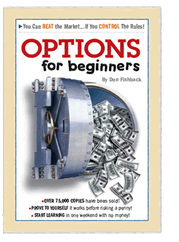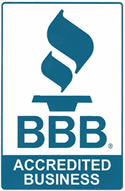.jpg)
Follow
Us:    
|
Investor Inspiration:
Market Masters
Online Training Conference
December 17th
1:00 to
6:15 pm EDT
Your panel of 7 will share knowledge that has taken them decade’s worth of time and money to accumulate.
Gain valuable knowledge that will give you a competitive advantage in the markets. Learn about several markets and investment philosophies in this must attend event. Watch as they take you step by step through their trading strategies and demonstrate techniques that have made them successful.
Register Today!
Your benefits of attending:
-Understand that the mentor you choose is far more important than any strategy of the day.
-Use one simple indicator to consistently find winning trades.
-How Pulse Options can empower you to turn 30 minutes of spare time into a steady income of $25,000 every month.
-What constitutes unusual option activity?
-How to use increased volatility to find better trades.
-Learn the 5 most influential factors in finding profitable trade setups and successful execution.
The topics above are only a fraction of what will be covered in this conference. This is a must attend webinar for every investor... and it's FREE!
All registrants will receive access to the recording!
Register Now

|

During my first decade as a trader and analyst, I was introduced to a strategy that had an extremely high probability of profit. I wanted to understand the mathematical reason for the extraordinary success. It was then that a friend of mine uttered the words that changed my life and ushered in a period of groundbreaking research. My friend Pete said, "It has something to do with that bell curve thing." From that point forward, I have used my mathematical skills to discover unique and profitable trading systems.
It's been more than 20 years since I first entered the financial services business as a broker. I still remember my first speculative trade; it was a futures spread trade involving Live Hogs (all of my friends in the business were farmers). Soon after entering the finance business, I moved away from the brokerage side to the analysis side where I really wanted to be. I must have been doing something right, because I promoted to Director of Research at the nation's largest options-only research boutique. In 1993, I left that firm to start my own company to focus strictly on volatility.
 |
|

This 100-page guide is the world's fastest-selling book on options trading - bar none! And no wonder, with its easy-to-read, step-by-step instructions on how to trade options for greater profits with less risk. Options For Beginners takes you step-by-step through the world of options, carefully explaining and illustrating every detail of how you can use options to make money fast at the same time you drastically reduce your risk.
Special Note: All Don Fishback's profits from the sale of this book are donated to the American Heart Association. To date, Don has donated more than $100,000 to help find an end to heart disease.
Learn More About
Options for Beginners
|
|

Better
Business Bureau
 |
|
Click
on authors name
to learn more
|
| |
|
|
Welcome to another exciting edition of Inside Trading. This week, we offer you an article from options guru, Don Fishback. Don explains how to beat the market by changing the rules.
Then, Lee Gettess provides his market analysis for the coming week.
Murray Ruggiero supplies the next segment about developing a neural network within an existing trading system.
Last, Norman
Hallett offers a video on changing your thinking to serve you better as a trader.
Enjoy!
Adrienne LaVigne
TradeWins Publishing
 |
|
You Can Beat the Market, If You Control the Rules
by
Don Fishback
The following
is an excerpt from Don Fishback's Options for Beginners
It sounds shocking, but it’s true. Making money trading can be incredibly difficult. Investment gurus will tell you that you have to be invested in the stock market to truly strike it rich. But that sure doesn’t protect you from declining markets. And if you want a safe investment, you sure aren’t going to find much inflation protection from a bank account paying less than 5%. In the past it’s been even worse, as some accounts have paid less than 1%.
The only true way to make a decent return and stay protected when the market heads lower is to trade – that is to buy stocks before the market rises and sell before the market falls. But based on the performance of most money managers, even that is extraordinarily difficult.
Trading boils down to just one simple rule: Buy low and sell high. It doesn’t matter whether you’re trading stocks, mutual funds, real estate, collectibles, or options. It’s just that simple. Yet while the concept is simple, the implementation has confounded novice investors, academics and professional traders since the beginning of organized financial markets. That’s because no one has been able to accurately figure out how high is high, and how low is low.
Sure, we’ve all seen and heard about those who have beaten the market for brief periods at a time. But only a small handful of traders beat the market for extended periods. There are numerous studies showing that investors would be far better off simply investing in a basket of stocks mimicking a stock index and then doing nothing, instead of placing money with a professional money manager.
This should not come as a major surprise. One look at the quarterly mutual fund statistics is evidence enough that even the pros, with billions of dollars in financial market research at their disposal, cannot beat the major market averages. It is a sad fact that over the long haul, about 70% to 80% of all money managers fail to beat the market. In other words, only 20% to 30% of all market professionals actually earn their management fee.
As if that 20% to 30% figure wasn’t bad enough, unfortunately, it’s a lot worse. That’s because the 20% to 30% that beat the market one year usually aren’t the same that beat the market the next year.
You Can Beat the Market
|
Lee
Gettess' Market Sense
by Lee Gettess
Lee
Gettess is a top trader who is excited
to bring you his video newsletter.
Each week, Lee will share his predictions
on what he anticipates from the bond
and S&P markets.
Watch
Video
|
Developing a Neural Network Based on an Existing System
by Murray Ruggiero
The following is an excerpt from Murray Ruggiero’s Cybernetic Trading Strategies
One of the most powerful but easiest approaches for building a neural-network-based model begins with an existing tradable rule-based system. In this approach, we break a rule-based model into its components, which can be used in developing a neural network. This process allows us to develop a tradable neural network model because our goal is to improve the existing system, not to develop a new one from scratch.
Let’s investigate the process of developing a neural network based on an existing trading system. The steps below list some of the applications of neural networks that are developed using existing trading systems. As you can see, the range of applications is broad.
- Develop a good rule-based system first, using as few parameters as possible. Ideally, use fewer than four parameters in the system. Keep the system simple, without any fancy filters or exit rules. It will be the neural network’s job to use the extra information you are supplying to improve your results. The extra inputs can include any information that you would have used to filter the original system.
- Analyze the results of your rule-based system. Examine where your entries and exits occur, and take into account the premise of the system. Analyze the trade-by-trade results to try to discover how a discretionary trader might have used the system as an indicator and outperformed the system.
- Use your analysis to develop your target output.
- After selecting your output, develop your inputs based on the original indicators used in your rule-based system, plus any filter you would have used. Add inputs based on how a human expert trader would have used this system as part of his or her discretionary trading.
- Develop your data sets, using the first 80 percent to train your model. The remaining 20 percent will be used for the testing set and the out-of-sample set. Normally, 15 percent of the data is used for the testing set and the remaining 5 percent is used for the out-of-sample set. These numbers are not set in stone; they are only guides.
- Train your model then test it on the testing set. Repeat this process three to five times, using different initial weights.
Developing a Neural Network
|
What You THINK Is What You GET
by Norman Hallett
In this drill, Norman covers how to change your thinking to change your reality. Learn how the RIGHT KIND of messages to your subconscious mind create behavior that SERVES you as a trader.
Watch
Video
|
|